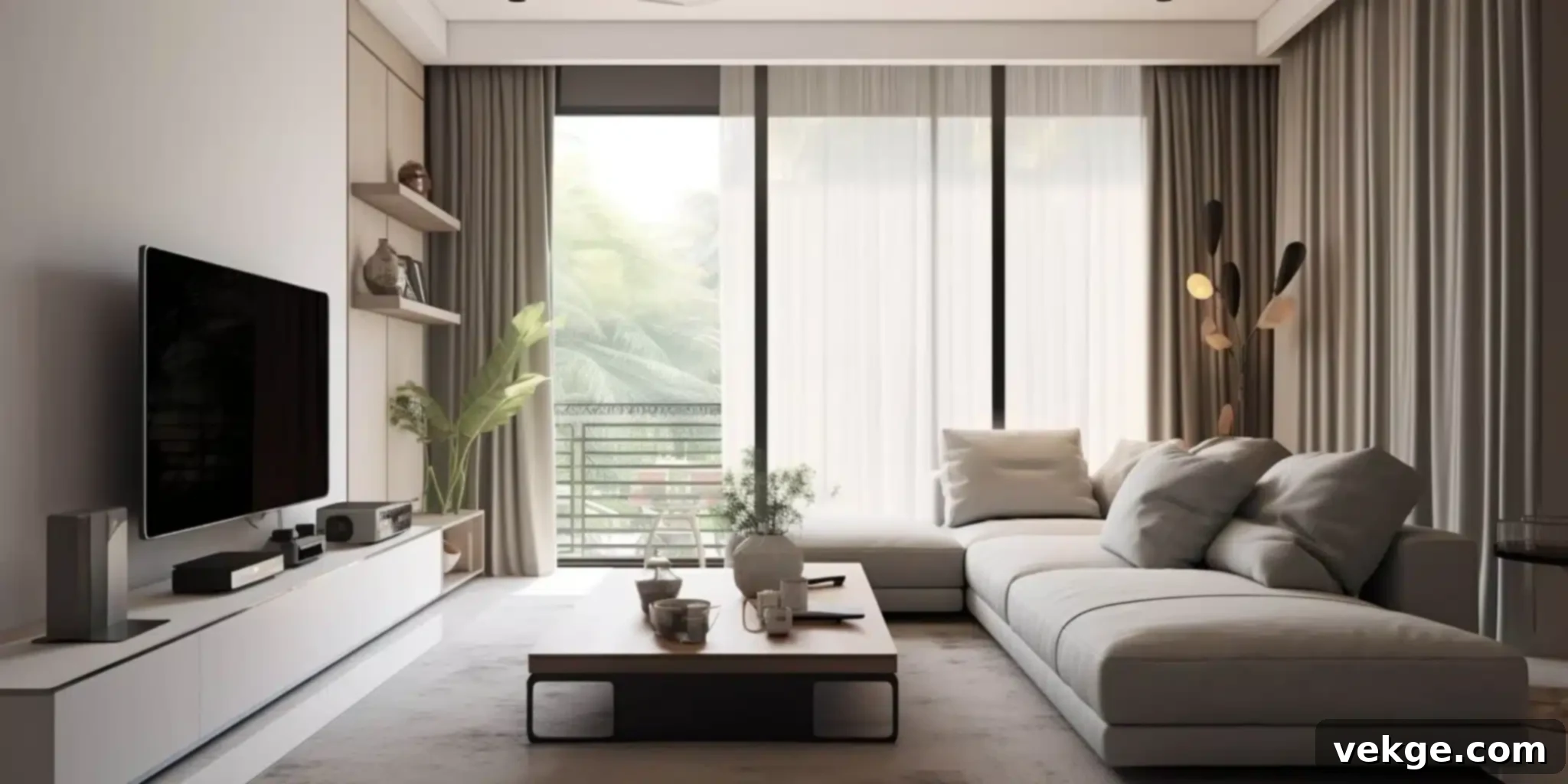Ultimate Guide to Smart Home Renovations: Maximize Your Living Space & Value
Embarking on a home renovation project is an exciting and often transformative journey. It’s an opportunity to reimagine your living space, infusing it with renewed functionality, enhanced aesthetics, and personalized comfort. Whether your goal is to accommodate a growing family, modernize outdated interiors, boost your home’s energy efficiency, or simply create a more enjoyable environment, strategic planning is key to a successful outcome. This comprehensive guide will equip you with valuable insights and actionable tips to navigate the complexities of home renovation, ensuring your project not only meets but genuinely exceeds your expectations.
From initial concept to final touches, smart renovation strategies are crucial for optimizing your investment and preventing common pitfalls. We’ll delve into understanding your unique needs, setting realistic financial boundaries, selecting the right professionals, and leveraging innovative design and technology to create a home that truly reflects your lifestyle and aspirations. Let’s explore how to unlock the full potential of your property.
Understanding Your Space and Needs: Laying the Foundation for Success

Before any demolition begins or a single nail is hammered, the most critical step is to thoroughly understand your current space and precisely articulate your vision for its transformation. This isn’t just about what looks good; it’s about how you live, how your family interacts within the home, and what future needs you anticipate. Consider factors such as natural light penetration, the flow of foot traffic between rooms, and how each area of your home is currently utilized—or underutilized.
A deep initial assessment will serve as the bedrock for all subsequent renovation decisions, ensuring that every change aligns perfectly with your lifestyle, preferences, and long-term goals. This phase also helps in prioritizing projects, allowing you to address the most pressing needs first, whether they relate to safety, functionality, or comfort. Moreover, an insightful evaluation can uncover hidden potential in your home—perhaps an overlooked corner perfect for a reading nook, or an awkward hallway that could be transformed into smart storage. Envisioning your ideal daily routine within the renovated space can reveal design solutions you might not have considered.
- Evaluate the functionality of each room: Does your kitchen truly serve your cooking habits? Is your living room conducive to relaxation and entertainment?
- Identify areas that feel cramped or underutilized: Could a spare bedroom be a home office, or a wide hallway gain built-in shelving?
- Consider how changes will affect the overall feel and flow of your home: An open-concept kitchen, for instance, dramatically alters the dynamics of adjacent living areas.
- Think about your lifestyle: Do you entertain frequently? Work from home? Need accessible features for family members?
- Future-proof your home: Anticipate needs like aging-in-place features, space for future children, or dedicated hobby areas.
Setting Realistic Budgets and Timelines: Your Financial & Chronological Blueprint

One of the most common sources of stress in any renovation project is an ill-defined budget and an unrealistic timeline. It’s absolutely essential to conduct thorough research and meticulously plan for both anticipated and unforeseen expenses to prevent financial strain. A comprehensive budget should account for materials, labor, permits, design fees, and a crucial contingency fund. Likewise, understanding that certain projects may naturally extend beyond initial estimates can significantly help manage your expectations and mitigate stress.
Being transparent about your budget with potential contractors fosters trust and facilitates a smoother project flow, helping to avoid costly overruns. Remember, the cheapest quote isn’t always the best value; quality and reliability often come at a fair price. Timelines, similarly, should be flexible enough to accommodate unexpected delays—which are almost inevitable in renovation—without compromising the overall quality of workmanship. Building in buffer time allows for material delivery delays, unforeseen structural issues, or even weather-related interruptions, ensuring the project stays on track without undue pressure.
- Include a contingency fund for unexpected costs: A general rule of thumb is to allocate 10-20% of your total budget for surprises.
- Research average costs for similar renovation projects: Get multiple quotes for different aspects of the work to gauge fair market prices.
- Be realistic about timelines, considering potential delays: Discuss project phases and milestones with your contractor.
- Prioritize expenses: Decide what elements are “must-haves” versus “nice-to-haves” to stay within your financial limits.
- Understand all costs: Factor in everything from demolition and waste removal to finishing touches and potential permit fees.
Choosing the Right Contractors: The Cornerstone of Your Project’s Success

The success, quality, and overall experience of your renovation project heavily depend on the expertise, reliability, and communication skills of the contractors you choose. This isn’t a decision to rush. Dedicate ample time to thoroughly vet potential candidates, checking their licenses, insurance, references, and reviewing their portfolio of past work. A contractor’s past projects can offer tangible evidence of their craftsmanship and aesthetic alignment with your vision.
Clear and consistent communication from the very beginning is paramount to prevent misunderstandings and ensure that your vision is accurately translated into reality. Establishing a strong rapport and a foundation of trust with your contractor can significantly impact the fluidity and enjoyment of the project. It’s also critical to have a detailed, written contract in place that explicitly outlines the scope of work, project timelines, payment schedules, and procedures for change orders. This legally binding document protects both you and the contractor, ensuring mutual understanding and accountability.
- Ask for referrals from trusted friends, family, or neighbors: Personal recommendations often lead to reliable contractors.
- Read online reviews and check ratings on reputable platforms: Look for consistent positive feedback and how contractors handle any negative comments.
- Interview multiple contractors: Discuss your project in detail and ensure mutual understanding of expectations, scope, and budget.
- Verify licenses and insurance: Ensure they are properly licensed for your area and carry liability insurance and workers’ compensation.
- Review their portfolio: See examples of their previous work to assess quality and style.
- Clarify communication protocols: How often will they provide updates? What’s the best way to reach them?
Maximizing Space with Smart Design: Crafting Functional & Beautiful Interiors

Innovative design solutions have the power to transform even the most challenging or compact spaces into highly functional and aesthetically pleasing areas. The art of smart design lies in its ability to optimize every square inch, enhancing both usability and visual appeal. This often involves a multi-faceted approach, utilizing vertical space for storage, incorporating multi-functional furniture, and carefully selecting color schemes and lighting that create an illusion of spaciousness and warmth.
Consider consulting with an interior designer or architect who can offer creative, tailored solutions specifically for your home’s unique dimensions and your family’s needs. Their expertise can uncover possibilities you might never have imagined, from built-in storage units that seamlessly blend into walls to custom furniture that serves dual purposes. Smart design doesn’t just make your home more enjoyable; it also adapts to your evolving needs over time, providing lasting value and increasing your property’s market appeal. Thoughtful design considers flow, light, and material choices to create a cohesive and inviting atmosphere.
- Use built-in storage to reduce clutter: Custom shelving, cabinetry, and window seats with storage can be game-changers.
- Consider foldable or multi-use furniture for small spaces: Think sofa beds, nesting tables, or expandable dining tables.
- Light colors can make spaces appear larger and more inviting: Paired with ample natural and artificial lighting, they create an airy feel.
- Open-concept living: Remove non-load-bearing walls to create a more expansive and fluid environment.
- Leverage mirrors: Strategically placed mirrors can visually double a room’s size and amplify light.
- Optimize natural light: Consider larger windows, skylights, or even light tubes to brighten dark areas.
Embracing Technology for Efficiency: Modernizing Your Home for the Future

In today’s interconnected world, modern technology offers an abundance of ways to significantly enhance your home’s efficiency, convenience, and overall comfort. Integrating smart technology into your renovation project can yield both immediate benefits and substantial long-term returns. This ranges from installing energy-saving appliances that reduce utility bills to implementing sophisticated smart home systems that provide seamless control over lighting, temperature, security, and even entertainment.
Smart technologies not only elevate the functionality and comfort of your home but can also drastically reduce energy consumption and environmental impact, thereby increasing your property’s value and appeal to future buyers. They enable a more personalized and responsive living experience, allowing you to adjust your home’s environment precisely to your preferences with minimal effort, whether you’re at home or away. Investing in these innovations means building a home that is not just beautiful, but also intelligent and sustainable.
- Research the latest in smart home technology: Explore smart thermostats, automated lighting systems, video doorbells, and integrated security.
- Consider energy-efficient appliances and materials: Look for ENERGY STAR ratings on appliances, and consider sustainable materials like low-VOC paints, recycled content flooring, and high-efficiency windows.
- Think about how technology can improve your daily life: From voice-activated assistants to automated blinds, convenience can be integrated everywhere.
- Integrate sustainable solutions: Explore options like solar panels, smart irrigation systems, or rainwater harvesting for a greener home.
- Improve indoor air quality: Smart ventilation systems and air purifiers can contribute to a healthier living environment.
Planning for the Unexpected: Navigating Potential Challenges

While envisioning the exciting possibilities of maximizing your living space through smart renovations, it’s equally important to prepare for the inevitable unexpected challenges that can arise. From discovering hidden structural issues behind walls to unexpected delays in material shipments, or even potential disputes with contractors over the quality and timeliness of work, these elements can unfortunately dampen your renovation experience if not properly anticipated.
This is where proactive planning and a robust contingency strategy become invaluable. Beyond the financial contingency, understanding your rights and responsibilities as a homeowner undergoing renovation is crucial. In scenarios where disagreements escalate or if you encounter issues related to negligence or poor workmanship, having access to expert legal advice can be an essential safety net. It ensures that while you’re focused on creating your dream home, you are also adequately protected from potential legal and financial pitfalls, allowing you to resolve issues efficiently and fairly.
- Be proactive in understanding your rights and responsibilities: Familiarize yourself with local building codes, permit requirements, and consumer protection laws related to home improvement.
- Consider consulting with a legal expert before starting major projects: Especially for large-scale renovations, a legal review of contracts can prevent future headaches.
- Keep detailed records of contracts, communications, and work progress: Document everything, including photos, emails, and payment receipts.
- Understand potential hidden issues: Be prepared for the discovery of outdated plumbing, electrical problems, or even mold once walls are opened.
- Obtain necessary permits: Ensure all required permits are secured before work begins to avoid fines or stop-work orders.
- Review your homeowner’s insurance: Confirm that your policy covers potential damages or accidents during the renovation period.
Living Through a Renovation: Managing Disruption
While the end result of a renovation is exciting, the process itself can be disruptive. Planning for how you’ll manage daily life during construction is a practical step often overlooked. Consider creating a temporary functional zone in your home, setting up a makeshift kitchen, or even arranging alternative accommodation if the scope of work is extensive. Clear communication with your contractors about working hours, noise levels, and dust control measures can significantly ease the inconvenience.
- Set up a “renovation survival kit”: This might include a temporary cooking area, dust sheets, and essentials for living without certain amenities.
- Communicate with your family: Prepare everyone for the temporary changes and disruptions to routines.
- Protect your belongings: Cover furniture, pack away valuables, and consider moving items to storage if necessary.
- Stay flexible: Expect that some days will be messier or noisier than others, and maintain a positive outlook.
Transforming Challenges into Opportunities: The Rewarding Journey of Home Renovation
Renovating your home is far more than just a construction project; it’s a unique and deeply personal opportunity to tailor your living space to your exact needs, desires, and evolving preferences. By approaching the entire project with meticulous planning, transparent and open communication, and a willingness to embrace creative problem-solving, you can effectively overcome any challenges that arise and successfully realize the home of your dreams. Remember, the ultimate goal extends beyond merely altering your physical space; it’s about profoundly enhancing the way you live, interact, and thrive within it. With smart strategies, dedicated effort, and the right support system, your renovation project can indeed be an incredibly rewarding journey that not only adds significant tangible value to your property but also immeasurably enriches your quality of life.
In addition to the physical enhancement of your property, the renovation process itself can be a powerful learning experience. It teaches you about design principles, construction methodologies, material sciences, and even personal project management. It’s a chance to deeply explore what truly matters to you in a home environment and how you can intentionally create a space that authentically reflects your personality, core values, and chosen lifestyle. This journey, with its inherent ups and downs, encourages growth, fosters creativity, and sparks innovation, pushing you to think outside the box.
As you meticulously navigate through each phase of your project, you’ll find yourself transforming not only your physical living environment but also your capabilities to effectively tackle and thrive amidst new challenges. This growth extends beyond the blueprint, empowering you with new skills and confidence. Ultimately, a truly successful home renovation transcends the visible transformation of walls and fixtures; it’s about crafting a home that consistently inspires, deeply comforts, and genuinely fulfills you every single day.
